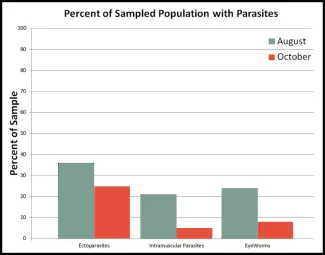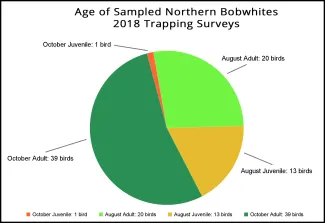
Preliminary data from trapping efforts last year indicate the state’s northern bobwhites are in good shape.
The Oklahoma Department of Wildlife Conservation is working to assess the health of northern bobwhites in the state. In August 2018, 33 quail from five wildlife management areas were collected for necropsy data. An additional 40 quail were trapped on seven WMAs in October 2018. After trapping, the birds were sent to the University of Georgia's Southeastern Cooperative Wildlife Disease Study for analysis. This study will be conducted again this year as well as in 2020.
Quail from the August survey showed more stressors from the heat of summer.
Of the August-trapped quail, 36 percent had ectoparasites (ticks, lice, etc.) versus 25 percent of the October-trapped quail. Intramuscular parasites (i.e. ricebreast) were found in 21 percent of the August quail versus only 5 percent of the October quail. Nearly one in four of the August quail had at least one eyeworm while only about one in 12 of the October birds had any eyeworms.
Overall, quail in Oklahoma are healthy. Total numbers are expected to be up slightly this season over a majority of the state. But due to unfavorable weather conditions during the 2019 nesting season, quail numbers in some areas such as central and far western parts of Oklahoma could be at or below last year's numbers.
Hunters should not be discouraged, though, as WMA managers across the state expect the hunters who do venture out to have some success.

